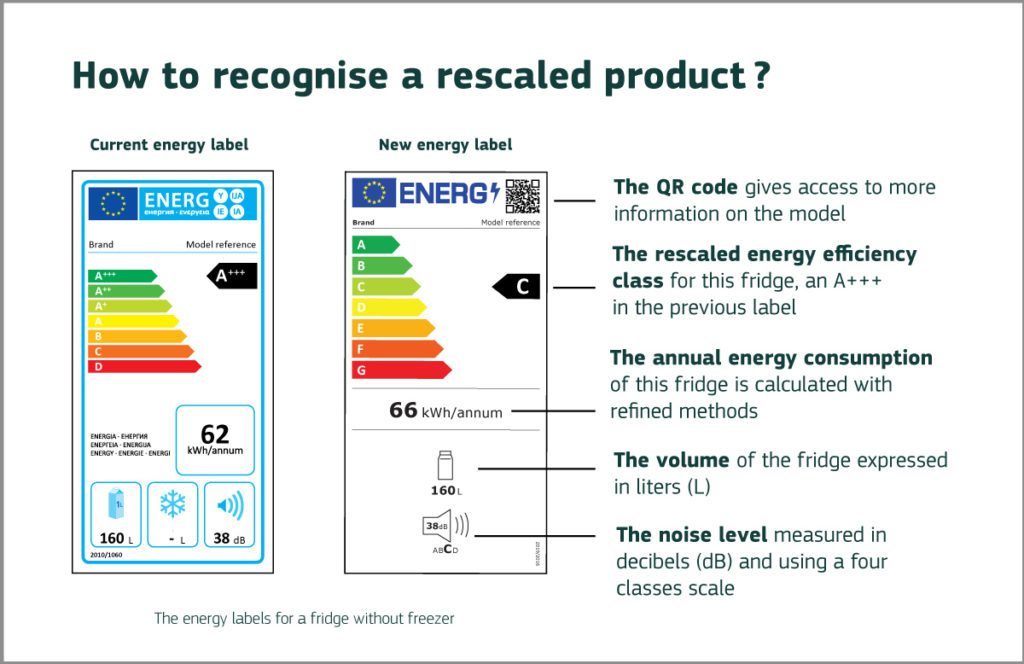What is the EU’s new energy labelling for?
The EU’s energy labelling regulation is to ensure easy-to-understand classification of the performance of a new electronic appliance’s energy efficiency, water consumption, noise level and more. Businesses within the electronics supply chain are to comply with the newly improved regulation from 1 March 2021.
What is to change with the improved regulation?
The classifications are to be updated to introduce an aligned design with that of the labels for tyre labels and many more. Labels also include pictograms for e.g. product capacity like filling capacity of a washing machine.

Source: European Commission
Who is to provide information to consumers?
Several parties in the electronics industry have obligations to properly inform consumers: the electronic appliance suppliers (manufacturers or importers in Europe); and appliance distributors.
How to secure variable prints on energy labels?
Looking at the application, prints need to withstand storage conditions, are subject to scuffing/light abrasion, and light chemicals. For such, Thermal Transfer Printing is a suitable technology. With the right ribbon and printer settings, you can ensure your prints always scan and last.
Which TTR is best suitable for energy labels?
At DNP, our TTR experts have tested on a wide variety of substrates commonly used for energy labels. Our ultra-durable wax/resin M265, versatile resin V300, or general-purpose resin R300 are some of the most recommended Thermal Transfer Ribbons that could provide you with the appropriate durability for your energy labels.
More information over the Energy Labels in the EU: European Commission’s Article about Energy Labels.
Need help with finding the most optimal Thermal Transfer Ribbons for your Energy Labels? We are here to help!
